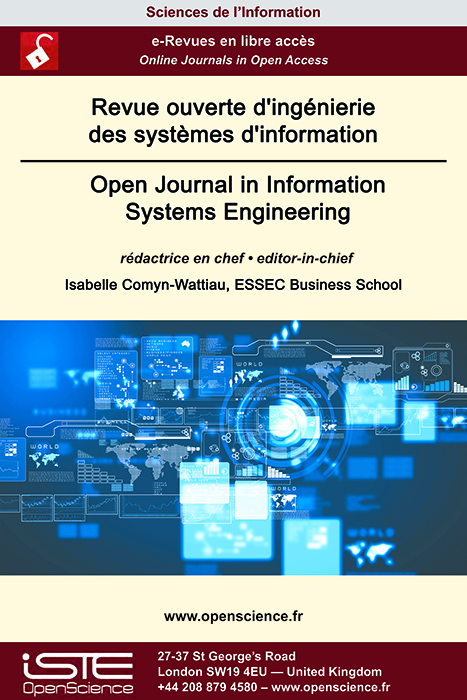

Information and Communication > Home > Open Journal in Information Systems Engineering > Issue
Ce numéro spécial s’inscrit dans une dynamique émergente sur l’analyse des données de la recherche (données numériques produites par les chercheurs, mémoires, articles scientifiques, actes de colloque, thèses, etc.) et veut faire la promotion de la recherche francophone.
We present here a synthesis of the session named “Producing and socializing knowledge: data visualization at the CIEU, which occurred in November 2018 with the conference “The city seen from the CIEU” marking the 50th anniversary of the research team. The team demonstrated, throughout its history, of a particular interest in graphical data visualization, via various forms but more importantly using modalities, uses types and facing various stakes at the heart of its scientific positioning and activity. We can now affirm that, albeit viewed for a long time as a technical activity tasked to illustrate research results, data visualization has profoundly evolved to become an essential part of research methods, even, in certain cases, become a research object in its own right. Today, the research organization of the team and its dynamism are at stake.
This paper introduces a digital library structured by an encyclopedic infrastructure. Scientists can simultaneously and collaboratively perform many digital practices. The article gives examples in musicology and in the environmental sciences. It can also federate editorial actions or terminology field to constitute large knowledge sharing services such as encyclopedias, or more technical as bibliographic bases. On a technical level it is realized with semantic wikis completed by an XML engineering. The design of this demonstrator is based in particular on an analysis of situations encountered at INIST.
The knowledge of all science domains is now available on digital libraries. The problem is that the papers belonging to different research communities do not use the same vocabulary to talk about the same subject. Access to relevant documents with information retrieval tools, search engines or research-paper recommender systems will fail if these methods do not consider this linguistic variability. In this work, we present strategies for using artificial intelligence technologies to successfully expand the literature search to bring diversity to the recommended results, thereby promoting multidisciplinary research.
In a first part of this paper, we highlight the historical context of Science of Science both in China and at a world level. In a second part, based on the unsupervised combination of GNG (neural gas) clustering with feature maximization metrics and associated contrast graphs, we perform an analysis of the contents of selected academic journal papers in Science of Science in China and the construction of an overall map of the research topic structure during the last 40 years. Furthermore, we highlight the topic evolution by the exploitation of the publication dates and make additional use of the author’s information for the sake of clarifying topics content. The obtained results, validated by domain experts, interestingly show that the Chinese Science of Science has gradually become mature in the last 40 years, turning from the general nature of the discipline to the relative disciplines and their potential interactions, from the qualitative analysis to the quantitative and visual analysis, and from the general research on social function of science to more specific economic function and strategic function studies. Consequently, the proposed novel method permits without supervision, without parameters and without help of any external knowledge to have very clear and very precise insights of the development of a scientific domain.
As part of the National Plan for Open Science, structuring and sharing research data is now one of the priorities of French science policy. Each institution and each scientific organization must have an open science policy and set up a set of services and devices for the management of research data. Based on field surveys, the article proposes a roadmap for the implementation of such a policy on a university campus in the social sciences and humanities. Ten principles indicate perspectives for the governance and steering of this policy, to determine development and investment priorities, and to make the link with research infrastructures, including Huma-Num.
This paper proposes a reflection on the relations between the observatories, the Spatial Data Infrastructures (SDI) and the user needs for the spatiotemporal and the environmental monitoring. After a reminder of the nature and objectives of the observatories and the SDIs, we analyze from case studies different observation systems, the availability of collected geographical data using various SDI and the adequacy of these infrastructures with the needs and means of the users. We will rely on multispectral (satellite and aerial) imagery collection and hydrometric data collection (streamflow measurements) to illustrate some of the numerical challenges observatories face in achieving their goals.

2025
Volume 25- 5
Issue 12024
Volume 24- 4
Special Issue2023
Volume 23- 3
Special issue2021
Volume 21- 2
Issue 12020
Volume 20- 1
Issue 1